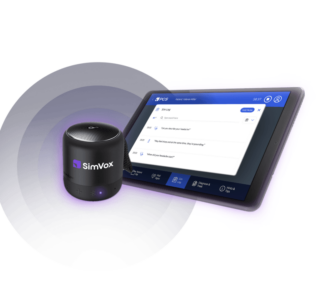How Healthcare Simulation Enhances Communication and Organizational Culture
Clinical simulation provides an excellent opportunity to enhance communication and organizational culture. The more that people are involved in a situation, the more important communication becomes. The need for stellar communication is even more evident when the outcome of a person’s life is directly related to the strong communication of those individuals caring for that person. Many healthcare workers perceive themselves as lacking communication skills, which is imperative for healthcare simulation professionals to jump in and provide the necessary support. Communication is a skill, and skills can be taught and learned. This HealthySimulation.com article by Eric Ayers will map out how healthcare simulation specialists can aid to expand communication and organizational culture throughout the multidisciplinary care for patients on a daily basis.
Healthcare employees are expected to communicate effectively with everyone they interact with. This often unspoken expectation is seldom reinforced by the experiential education needed to ensure the skill of communication is enhanced. The educational focus tends to be on bedside skills, procedures, tasks, actions, and processes. All types of communication are needed and the information transference value is decreased when communicated ineffectively. Examples of situations that are greatly impacted by poor or ineffective communication are patient hand-off to another provider, or pertinent information that needs to be explained to a patient.
View the LEARN CE/CME Platform Webinar Leverage AI for Large Scale Healthcare Communication Skills Training to learn more about improving clinical communication practice.
Sponsored Content:
Design for Infinite Thinking
The healthcare simulation team possess many tools in the toolkit to enhance communication skills to the masses. Design Thinking is an approach to design solutions for end users with a single problem statement in mind. As in all new initiatives, the healthcare simulation professionals begin with a plan. Every great plan begins with the appropriate target audience. Empathy maps are great ways to ensure that the group’s effort is actually solving for the correct person/people.
A strategy for the healthcare simulation team to promote effective communication and improve the organizational culture for safe patient care is to adopt an infinite thinking versus finite thinking. Infinite thinking embraces challenges and continuously explores opportunities for improvement, and focuses on the system impact instead of only the immediate impact. An example on how to operationalize this is to provide the clinical simulation space for an OR and PACU team to have an experiential opportunity to practice effective communication during a patient hand-off.
The identified problem, communication in the above example scenario, is the superficial side effect to a much deeper problem. So, based on the hand-off example, maybe the healthcare simulation team builds the hand-off scenario as one aspect or goal of a more complex scenario.
Sponsored Content:
Simulation Design in Healthcare
Should a clinical institution experience an increase in CLABSI (Central Line-Associated Bloodstream Infection) rates and decrease in effective communication, healthcare simulation could be utilized to improve performance. The details of the problem have been discussed in QI meetings with the healthcare simulation leaders at the table. The healthcare simulation professionals can develop a scenario that is systems-based, promoting the combination of multiple processes, departments and disciplines. This approach offers the healthcare simulation team the ability to meet multiple objectives, thereby improving culture, enhancing communication, and boosting patient outcomes simultaneously.
While such a simulated scenario will undoubtedly require an investment of resources to plan and execute, the potential for meaningful ROI is considerable. Read How Simulated Training Reduced Infection Rate & Hospital Costs to understand why just in time training provided a 7:1 cost savings for CVC infections. Interestingly enough, this systems-type approach can only occur if those leaders within the organization, including the healthcare simulation specialists, communicate openly and effectively.
Once the simulation scenario has been created, tested, and fine-tuned by the healthcare simulation team and those individuals that are part of the process, the next step is to launch. Strategy is just as important in this step as in the previous. The issue of ineffective communication has already been identified, which led to this initiative. As per the example provided, the organization is also experiencing an increase in the number of patients experiencing a CLABSI.
Which departments are experiencing the highest errors associated with ineffective communication and the highest number of CLABSI cases? The answer to these questions offer the greatest impact in the shortest amount of time, thereby creating a wave of positive outcomes and buy-in throughout the organization.
Tying the Steps Together
For the purposes of this article, the assumption is that there is an identified need to improve communication from the Emergency Department (ED) staff. Likewise, the 2nd floor has been identified as an area with increased patients experiencing CLABSI events. This systems-based scenario could include:
- A patient presents to the ED with a fever and currently receives long term antibiotics and/or chemo via a Central Venous Line (CVL).
- The ED RN completes the standing order per organization’s policy
- Patient to be admitted to the 2nd floor, where a focused report is given by the ED RN and received by the 2nd floor RN.
- The 2nd floor RN proceeds to complete the necessary steps to receive the patient.
- An order is noted by the 2nd floor RN to provide a cap change on the patient’s CVL, followed by an order to administer a series of medications that require multiple accesses of the CVL.
Within this example scenario, the two objectives, enhance communication of the ED and increase CVL care to decrease the number of CLABSI incidents, can be met. Especially if the scenario is immediately followed by an intentional debriefing by the qualified healthcare simulation specialists.
Practice like we play is a mentality that many healthcare simulation professionals adhere to and the value-add that comes with this mentality is growth and strategy-focused. When an organization recognizes that clinical professionals are not communicating effectively, then simulated training can provide the opportunity to improve team dynamics and practice outcomes.
To recap, the healthcare simulation team can provide stellar support to the organization by identifying the immediate concern. In this example there was ineffective communication. Digging deeper to understand either what the underlying cause is or what other problem this concern is creating down the line. Create a scenario that allows practice of each concern within the multiple systems. Provide a quality debrief that reinforces the expectations of the employees. Evaluate after a few groups have gone through and make necessary changes within the process to ensure objectives are being met. This also allows for the identification of other elements that are concerns that can be implemented within the next scenario build.
Through this process, look for and identify the culture shift that comes along with launching this new initiative. Human potential is an amazing by-product that is witnessed when the healthcare simulation team empowers individuals to self-identify and correct knowledge or process gaps within their practice. This self-discovery leads to more organic shifts in culture that permeate throughout the organization. Like in all things healthcare simulation, have fun and stay focused on the process. If the focus remains here, the outcomes will surpass expectations.
Learn More About Best Practices in Simulation Scenario Design from the INACSL Standards
With just under two decades of nursing experience, primarily in Pediatric Emergency and Healthcare Innovation and Simulation, Eric Ayers fell in love with the idea of learning through experience. He is the Founder and CEO of emc2, and host of Purpose Empowered Podcast. Ayers is an optimist and thought leader with a passion for inspiring all to reach an understanding of true personal potential. Leveraging his background in healthcare education with his MBA in Healthcare Administration, Ayers’ focus is to add value within organizations by illuminating value within their employees. He is also a husband, a father, an ideator, an innovator, an author, and a lover of both possibility and humanity. It is his intention to change the world through shifting perspectives.
Sponsored Content:


















